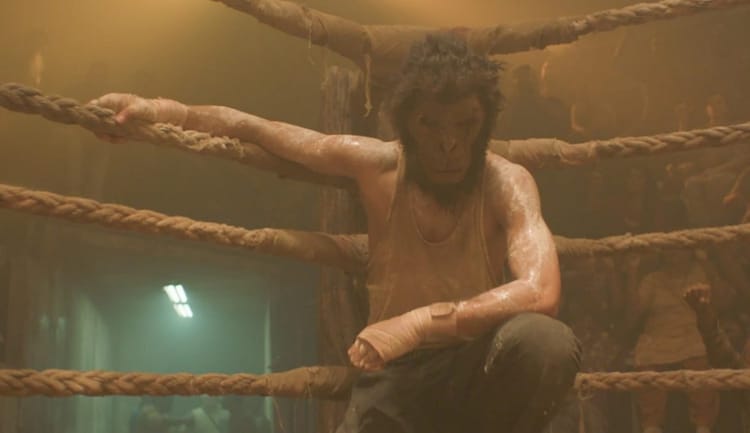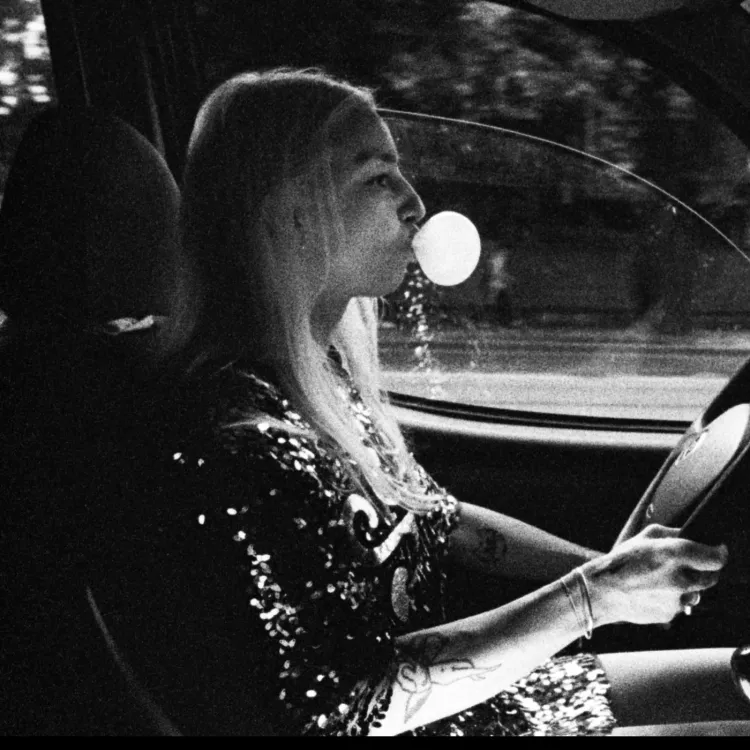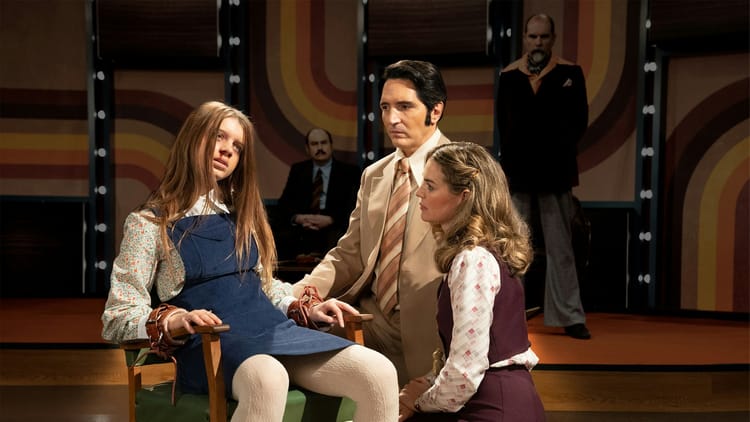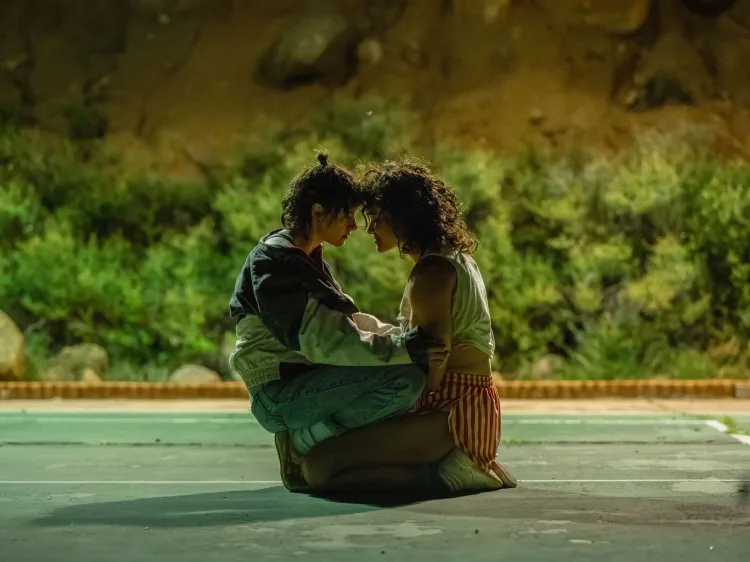John Wick 4
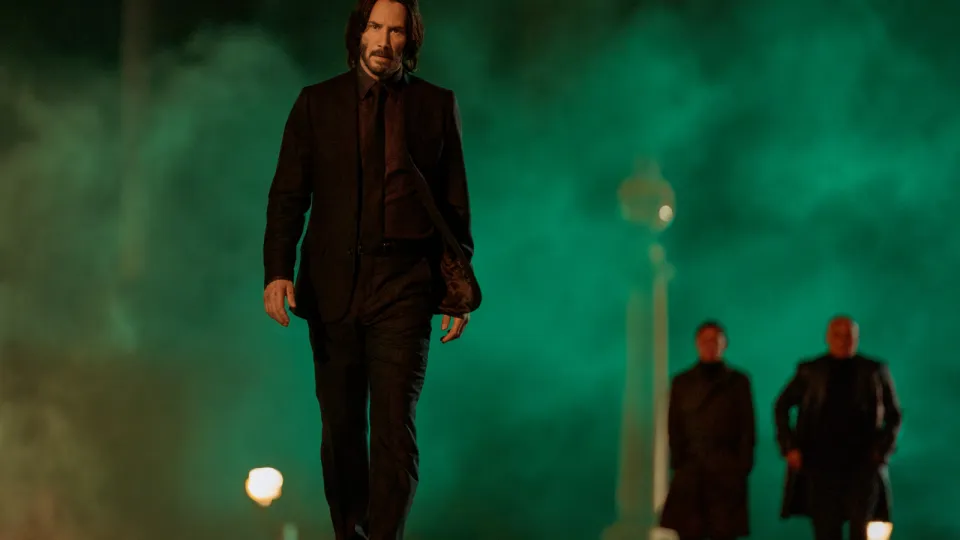
Before the blood oaths, the rules, the secret societies operating in the shadows, there was one very simple, very cruel act. They shot his dog. Now, nine years later, four movies in, two spin-offs in the works, and hundreds of bodies piled up on the wayside, John Wick has come to mean something much more than that.
Within the films' world, the name evokes a sense of horror, respect, awe, a deep fear in all who have offended him or stand in his way. But in our world, it brings to mind a different image. Not just that of floppy-haired Keanu, but that of crystal-clear action sequences, choreographed to a tee, grounded and spectacular all at once, designed for our viewing pleasure. Chad Stahelski, the director of all four of the franchise's films, isn't trying to trick audiences with quick cuts or shaking cameras. He wants to provide us with a full display of physical prowess by his incredible team, who are some of the best stunt people in the world.
That's the same critique I often hear of the "John Wick" films: that they are nothing but extended shoot-outs, hollow and without emotional heft. It is true that as the franchise has continued, the plot has become harder to follow. In the first film, Wick was getting revenge for his slain dog. In the second film, he is forced back into his life of crime, to assassinate a new target for his freedom. In the third, he... has to find Halle Berry and go to the desert? And now in the fourth, I, someone who has seen all of these movies twice, have no idea what John Wick aspires to do. He still wants freedom. But what does that mean exactly? All I know is that whatever this emancipation may be, he's willing to kill to get it. And those kills supplant his motivation, because trying to understand the enigma of John Wick is much less exciting than watching him use a new household object to eliminate a small armada.
But beyond Wick as a central figure, there is also the larger scaffolding. The world where these kills take place compensate for Wick's characterization, providing a layer of depth and mystery. This isn't a simple world. This is one bound by rules, governed by arcane laws, decided upon by tattooed women clicking at typewriters and connecting switchboards. The world-building of the Wick films has been a major feature since the first film, though its mileage varies. They are great ways to move us from set-piece to set-piece, and to introduce eccentric new assassins, but they also can slow down the film's momentum especially when the rules aren't that clear. In "John Wick Chapter Four," it's more the former than the later. We have the new Marquis, played by Bill Skarsgård, acting on behalf of the High Table to eliminate the rebellious and blasphemous John Wick. That's largely it. There's other elements, like the factions within the High Table, the global network of the Continental, and more rules that nobody knows. But each of those work to move John Wick forward, from Tokyo to Paris, church to church, nightclub to nightclub. Like an ambitious henchman, the worst thing the world can do in the "John Wick" films is get in the way. Thankfully, this entry lets him loose.
One of the most enjoyable things about the "John Wick" films is that the fights are designed to present Wick as both a boundless killing machine, and also a fallible human being, still subject to the laws of physics. This entry in the franchise takes that to its ultimate limit, crafting sequences that can only be described as Looney Tunes adjacent. There is almost a sense of slapstick, as a goon flies off a car and crashes in a lamppost, or John Wick tumbles off yet another precipice. The kills are at times elegant, and sometimes clumsy. But they are always jubilant. We feel joy not because we enjoy human suffering but because of the sheer technique on display, the skill and acumen of the stuntmen to make the ridiculous real.
The franchise has made several overtures to give us the anti-John Wick, a gun-shooting, gun-throwing rival that can hold his own against the mighty Baba Yaga. Common was passable as the well-mannered Cassian in "Chapter 2" and Mark Dacascos was incredible as the grinning Wick super-fan, Zero, in "Chapter Three." This film's entrant, Caine, played by the impeccable Donnie Yen, is their best attempt yet. Yen fits in like a glove to this franchise as the blinded hitman, slurping noodles before catching arrows in mid-air. To put it bluntly, he effortlessly exudes cool. On one level, it is the star power of Yen, one of the greatest living fight performers. But beyond that, the character itself is such a perfect match for Wick, both of them reluctant warriors, eager to be done with this lifestyle. One of the only downsides of this is that Caine is so magnetic that Wick almost feels mundane beside him. The same can be said of Rina Sawayama's screen debut as Akira or Scott Adkins as Killa, both of whom fight with such unique physicality that Wick looks vanilla by comparison. That also makes things difficult for the film's other new entrant, Mr. Nobody or Tracker, played by Shamier Anderson, who doesn't possess a signature flair like the other characters. In any other entry of the franchise, Anderson's Tracker would be a highlight. But in "Chapter Four," he is almost forgettable.
"John Wick: Chapter Four" appears to be closing the book on Baba Yaga. It's a surprisingly emotional film, that is also the franchise's funniest yet. Part of me almost mourns the end of this saga, where it felt like the franchise had finally hit its stride, managed to balance its complicated world with its sharp fight sequences. Yet at the same time, it does feel like the right moment for John Wick to exit stage left, as already in this installment, he starts to wear out his welcome.
But with a spin-off film and television series in the works, I wonder if the franchise can survive without him. Without his gruff grunts, his tactical reloads, his handiness with a pencil, a book, a magazine, or the rear leg's of a horse, will the franchise survive? All I ask for is that if this franchise does indeed die, it does not stretch itself too thin, bleeding out slowly. Instead, I hope it goes out with a bang, whipping into a lamppost at 80 miles per hour, plummeting headfirst off a staircase, or taking the bullet for a friend. Because at the end of the day, it's not just about the destination. It's about the kills you make on the way.
